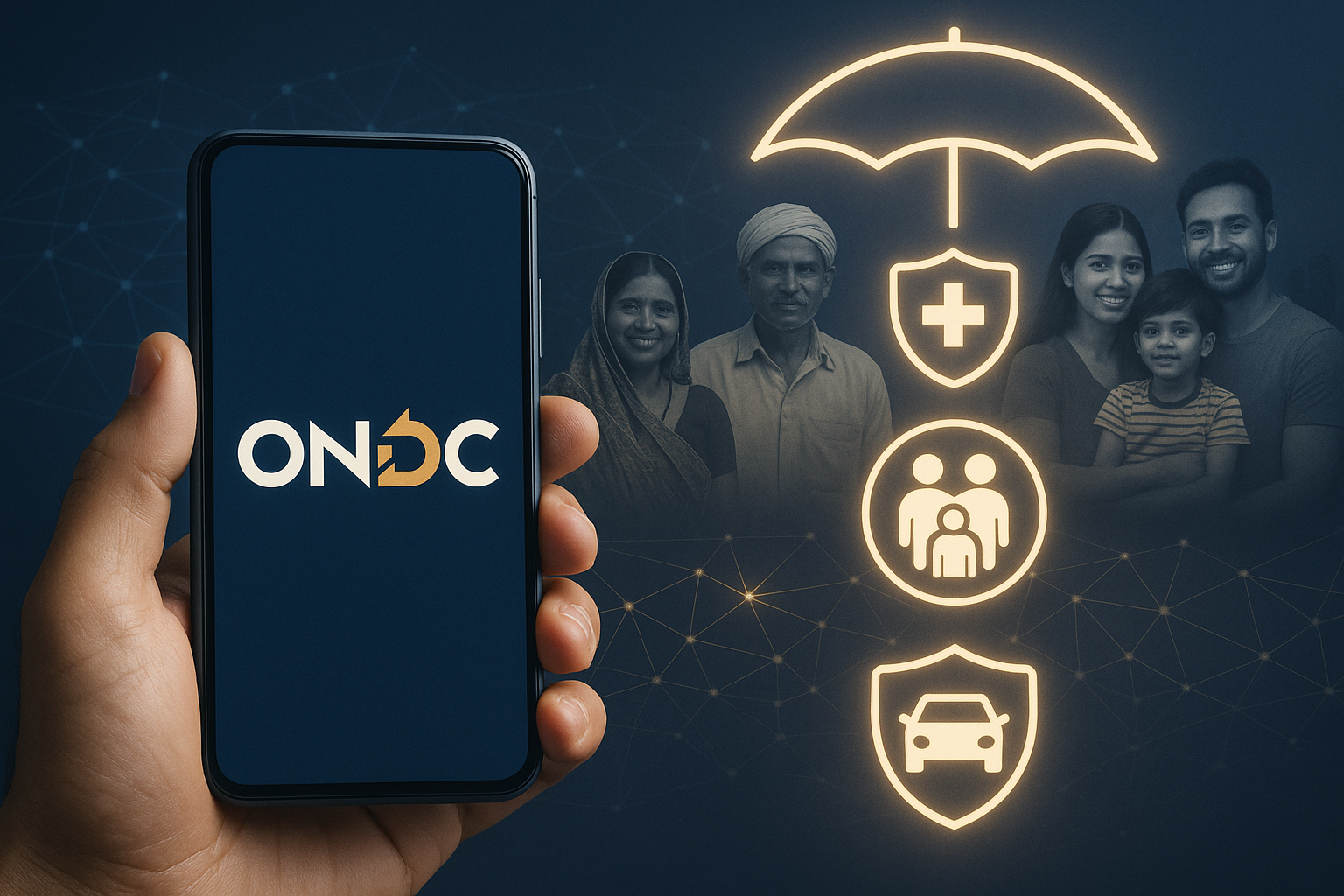The Open Network for Digital Commerce (ONDC) is set to introduce insurance products on its platform within the next 12 months, marking a major milestone in India’s push for digital financial inclusion. The move is expected to make insurance more accessible, affordable, and widely distributed by leveraging ONDC’s open-network model that has already transformed e-commerce and mobility services.
This expansion will allow millions of users to access insurance products seamlessly, bridging the gap between insurers and underserved segments across urban and rural India.
What the ONDC Rollout Means
ONDC’s entry into insurance comes as part of its strategy to expand beyond commerce and payments into digital financial services. By integrating insurers and intermediaries into its open-network framework, ONDC will enable greater transparency, standardized offerings, and competitive pricing.
For consumers, this means being able to compare and purchase insurance policies—health, life, motor, or micro-insurance—through a single digital ecosystem. For insurers, it creates a scalable and low-cost channel to reach new customers.
Transforming Insurance Distribution
Traditional insurance distribution has often been limited by high costs, complex processes, and low penetration in rural areas. ONDC aims to break these barriers by digitizing the supply chain and ensuring interoperability between service providers.
This could significantly enhance financial inclusion, especially in regions where traditional insurance penetration remains low. It also aligns with the government’s broader agenda of universal financial protection and access to affordable coverage.
Industry Impact and Expectations
The integration of insurance into ONDC is likely to reshape the competitive landscape for insurers and fintech players. Digital-first insurers and insurtech startups are expected to benefit the most, gaining instant access to ONDC’s growing user base.
Established insurers, too, may leverage the platform to expand outreach and reduce distribution costs. However, it will also demand greater digital readiness and customer-centric product innovation.
Why This Matters
The move highlights the growing convergence of fintech, insurtech, and policy reform in India’s financial ecosystem.
Expands insurance penetration by making policies more affordable and accessible.
Supports insurtech and digital-first models, boosting innovation.
Helps insurers cut costs and scale efficiently.
Strengthens India’s ambition of building a digitally inclusive financial economy.












